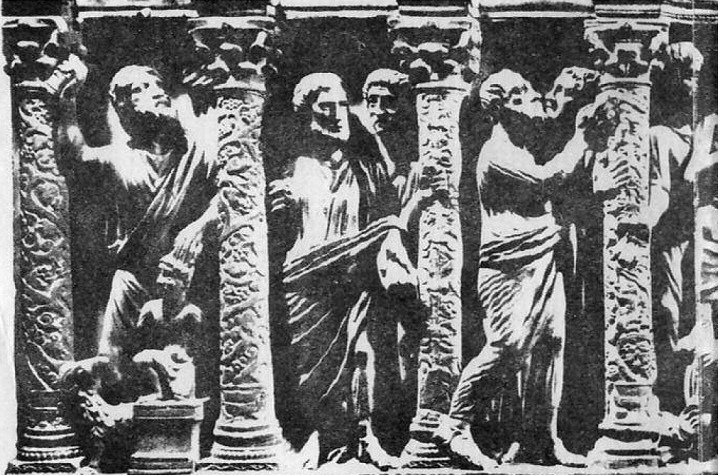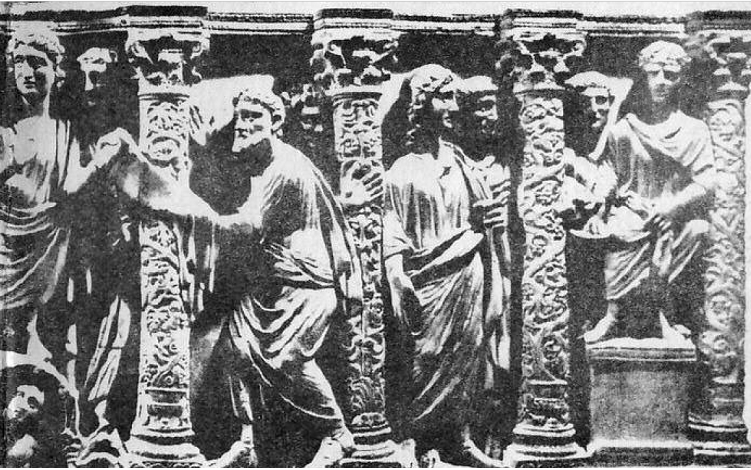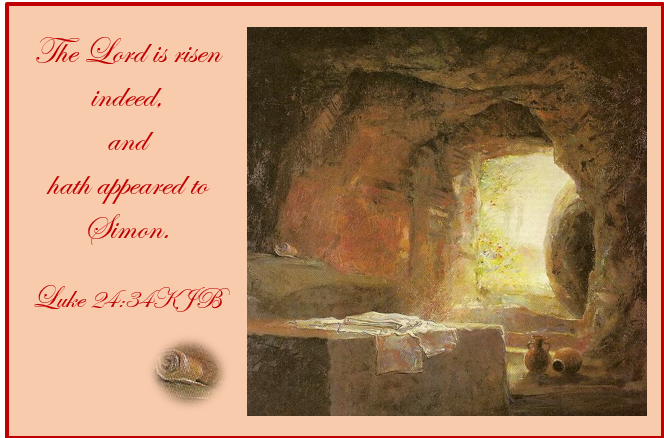Written by W.G. Finlay


Posted, additional note and images added by Jackie
CHAPTER 5
LUKE
The author of the Third Gospel was, on his own admission, NOT “an eye-witness and minister of the word from the beginning” (Luke 1:2) and therefore dependent on others for the information contained in his Gospel. J. Patterson-Smyth in his book, A People’s Life of Christ, indicates the identity of Luke’s source of information that on page 31 of this book it is stated: ”It was believed that St. Paul had chosen him, Luke, to do it.” (i.e. write the Gospel); that St. Paul was his collaborator; that it was St. Paul’s teaching; that the early Church called it St. Paul’s Gospel. Here are two fathers of the Second Century Irenaeus, in Gaul, says: “Luke put down in a book the Gospel preached by Paul”; Tertullian in Africa says: “Luke’s digest was usually ascribed to Paul. If one follows the history of Luke, Patterson-Smyth’s above contention will be seen as a logical outcome of the close friendship which existed between Luke and Paul.
According to Tertullian, Luke, who was in Antioch, in Syria (Eusebius, Hist. 3:4) was converted by Paul “Lucas non apostolus, sed apostolicus; non magister, sed discipulus, utique magistro minor, certe tanto posterior quanto posterioris Apostoli sectator Pauli sine dubio” – and the balance of probability is in his side, as the author of The Acts, records that he accompanied Paul on several of his journeys and that when Paul went to Rome, he also accompanied and remained by his side when he was put in prison (Acts 27:1). The first person, plural which characterises the account in the Acts from the 10th to the 16th chapter, is a clear indication of Luke’s association with Paul’s band and from this may be ascertained when he either left or rejoined whatever enterprise was undertaken Dr. William Smith in his Dictionary of the Bible makes this remarkable statement when recording the life of Luke:”…. We only know him whilst he stands by the side if his beloved Paul: when the master departs, the history of the follower becomes confusion and fable” – from which may one deduce that Luke was totally committed to serve whatever cause Paul stood for.
This being so, it would be natural to find traces of Paul’s doctrines in Luke’s Gospel as well as in The Acts – the latter bearing unmistakable traces of this. Luke as far as is known had no contact with Peter and being known as Paul’s disciple, any denigration of Peter as evident in Mark’s account would have been too obvious a ploy and clearly recognised as such. Luke therefore softens Mark’s harsh criticism and very pointedly deletes reference to the rebuke which the Lord delivered against Peter after the confession,
- “He said unto them, But whom say ye that I am? Peter answering said, The Christ of God.And he straitly charged them, and commanded them to tell no man that thing;” (Luke 9:20,21)
Throughout Luke’s Gospel one may trace a very delicate handling of the Peter story recorded in the other Gospels which are advantageous to Peter – one of which is the exclusive post-Resurrection appearance to Peter, Luke 24:34.
However, and notwithstanding the softening of Mark’s attitude, one finds as was stated at the outset, the subtle use of Peter’s name “Simon” before he was renamed by the Lord. In Luke’s last reference to Peter – which has to do with the contention that he was the first to see the Risen Lord – the use of Peter’s earlier name is most blatant.
- “And they rose up the same hour, and returned to Jerusalem, and found the eleven gathered together, and them that were with them, Saying, The Lord is risen indeed, and hath appeared to Simon. And they told what things were done in the way, and how he was known of them in breaking of bread”. (Luke 24:33-35).
So then Peter is merely “Simon” unchanged and still the same man who was pre-occupied with fishing rather than with being “fishers of men”.
There are, however, several inconsistencies in this account, and it would serve to note them. In the first instance, there is absolutely no reference to Peter in the discourse which the Resurrected Lord had with the two on the Road to Emmaus which makes one wonder where they obtained their information. In the second instance, Luke states specifically that “the Eleven” were gathered together among whom Peter was obviously numbered – Judas, for obvious reasons, was absent. If “Simon” had already seen the Risen Lord, as Leader of the Apostles why had he not told them about the wonderful event, and why was he, in common with the Eleven, so terrified when the Lord appeared to them? This silence by Peter and the terror of the Eleven carried a strong indictment against “Simon” who, according to Luke, did not believe the evidence of his own eyes. Paul’s gentile church, would be a further evidence of Peter’s inadequacy as leader of the Christian Evangel.
JOHN’S GOSPEL
Before passing on to John’s Gospel, one should note that the Apostle did not rush in to record the events in the Life of the Lord, but waited until Jerusalem was destroyed and the little band of Apostles had been scattered, and their work largely replaced by Paul’s gentile church. John was at Ephesus when he prevailed upon by the bishops to write the Divinity of Christ, and it was because of this that he wrote the Gospel which bears his name. He was, of course, not free to write as he would have liked because, as seen in his Epistles, that men were denying the Truth on which his faith rested.
- “Beloved, believe not every spirit, but try the spirits whether they are of God: because many false prophets are gone out into the world” (1st John 1:4}
(As you can see, the chapters in the writings are not mentioned. The Bible verses, are. However, I am pretty sure that the following chapters, I added, are the intended chapters. John is, of course, addressing his epistles to the dispersed Israelites, as did. Peter, James and Jude, Jackie)
- “For many deceivers are entered into the world, who confess not that Jesus Christ is come in the flesh. This is a deceiver and an antichrist” (2nd John 2:7)
- “I wrote unto the church: but Diotrephes, who loveth to have the preeminence among them, receiveth us not.Therefore, if I come, I will remember his deeds which he doeth, prating against us with malicious words: and not content therewith, neither doth he himself receive the brethren, and forbiddeth them that would, and casteth them out of the church”. (3rd John 1:9,10)
He nevertheless wrote this Gospel, and notwithstanding the fact that he attempted to couch his history in terms which would make it difficult for his detractors to pervert, there are evidences that this was done. Several students of John’s work have commented on the fact that there is no evidence, from the style and theology of his Gospel, that more than one hand was involved – a contention which is borne out when the subject, Peter, is considered.
It should, of course, be remembered that John was one of the original Twelve and that, with Peter and James, he had been singled out for a deeper education than the others. It appears quite unreasonable that he should castigate Peter and yet as done reads his Gospel, this is precisely what he is purported to have done. If one considers the account of the arrest of the Lord in the Garden of Gethsemane with particular reference to the crowd which came to apprehend Him, the identity of the one who cut off the ear of the servant of the high priest is not mentioned by either Matthew, Mark, or Luke, but John not only identifies the culprit as Peter, he also names the servant Malchus (John 18:10). Following this, one is introduced to an enigmatical “another disciple” whom most theologians identify as John himself, but which identification is ambiguous in the extreme.
- “And Simon Peter followed Jesus, and so did another disciple: that disciple was known unto the high priest, and went in with Jesus into the palace of the high priest”. (John 18:15)
There is absolutely no evidence to support the contention that this “disciple” was John, as there is nothing in his background which suggests that he had contact with the high priest, nor that his association with him was such as to follow him free access into the palace. After all, John was known to be one of three Apostles especially selected by the Lord, and it is hardly reasonable to assume that one of those three was on friendly terms with the high priest. However, in reading John’s Gospel, it would appear that this other “disciple” had a greater influence than Peter for while Peter stood at the door without the other disciple passed in, and it was apparently only after the mediation of that other disciple, that Peter, was allowed in. Strangely enough, in John’s record of the interrogation by the high priest, no further mention is made of the “other disciple” and one wonders who it was and why he was introduced in to the record. It could, of course, be that John, writing in cryptic terms, was endavouring to convey the idea that someone in the playing a deep Pharisaic game with them. Be that as it may, there is certainly no way in which, in this instance, that “other disciple” could be identified with John himself.
Another occasion where the same cryptic “other disciple” is used found in John’s narration of the open tomb”, when, after Mary Magdalene saw the moved sealing stone and the empty sepulchre and had told Peter and the “other disciple” whom Jesus loved”.
Peter therefore went forth, and that other disciple, and came to the sepulchre. So they ran both together: and the other disciple did outrun Peter, and came first to the sepulchre. And he stooping down, and looking in, saw the linen clothes lying; yet went he not in. Then cometh Simon Peter following him, and went into the sepulchre, and seeth the linen clothes lie. And the napkin, that was about his head, not lying with the linen clothes, but wrapped together in a place by itself. (Editor’s note: What price the shroud of Turin?) Then went in also that other disciple, which came first to the sepulchre, and he saw, and believed. (John 20:4-8)
The significant part about this is that, while it is not stated what that other disciple believed, nothing is said about Peter who, from the record, believed not. The following verse is a contradiction.
- “For as yet they knew not the scripture, that he must rise again from the dead”. (John 20:9)
The Lord had, on several occasions, told His disciples that He would be killed and be raised again in the Third Day, therefore this statement cannot be true.
- “From that time forth began Jesus to shew unto his disciples, how that he must go unto Jerusalem, and suffer many things of the elders and chief priests and scribes, and be killed, and be raised again the third day.” (Matthew 16:21)
- “And he began to teach them, that the Son of man must suffer many things, and be rejected of the elders, and of the chief priests, and scribes, and be killed, and after three days rise again.” (Mark 8:31)
- “The Son of man must suffer many things, and be rejected of the elders and chief priests and scribes, and be slain, and be raised the third day.” (Luke 9:22)
IN SUMMARY
As one looks at the Gospel accounts – all four of them – there can be very little doubt that they all show a very strong Pauline influence, which, bearing in mind when that were written, is not surprising. It is of course, impossible to tell the exact date on which each of the accounts was written just as it is impossible to support the theological claim that Mark or some other document which ambiguously designated simply as Q was the source from which all the accounts were written. It popularly thought that Mark was indeed the first to write an account of the Life of the Lord and that Matthew copied his account from this and that the others wrote their versions of Mark’s Gospel. However, to most people, Matthew’s Gospel is a bit of enigma for while all the early historians express the view that he originally Hebrew, none of them speak of ever having seen that original – only Greek copies of it. When the translation was made is therefore unknown and one can be reasonably sure that in the translation, anything contrary to what Mark and later Luke had written would be amended to bring to into line.
There is, however, one point which was overlooked and that has to do with the statement by the Lord in which, He declared that the Purpose of His Advent was within the context “the lost sheep of the house of Israel.” (Matthew 15:24). The story of the Syrophenician woman in which the Lord’s statement of Purpose occurs is only briefly referred to in Mark’s Gospel and in this, all reference to “the lost sheep of the house of Israel: has been removed (Mark 7:24-30), As must be obvious to anyone indoctrinated by Paul’s “gentile” persuasion, this statement would be anathema as would be the Lord’s last commission to Peter “Feed My sheep” which is a direct commission to be involved exclusively with Israel, the true Covenant People of the LORD. For the success of Paul’s gentile church, Peter had to be discredited and this is precisely what was done as Peter recedes in importance and Paul asserts both himself and his doctrines, one can truly appreciate the expression:
ROBBING PETER TO PAY PAUL
Additional note by Jackie:
In other of His writings, Dr. Finlay quotes Paul. However, this may very well be BEFORE he realized that Paul in his epistles is many times contradicting the Teachings of Yahshua Christ.
This post, and the previous five posts on this topic are under the category W.G. Finlay.




